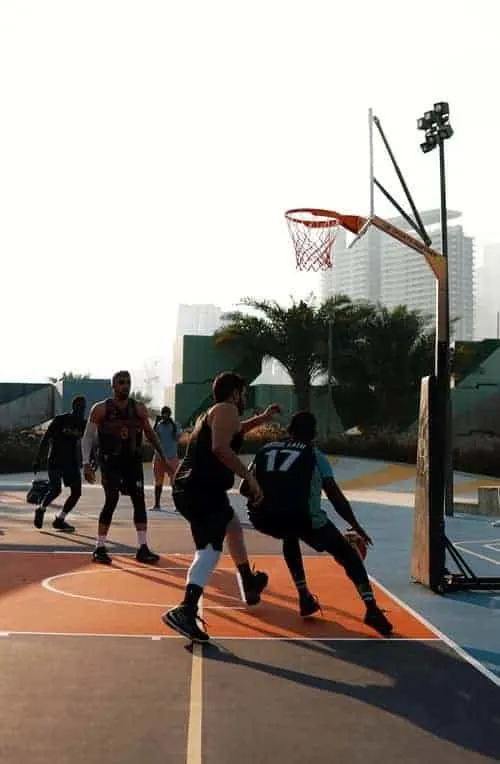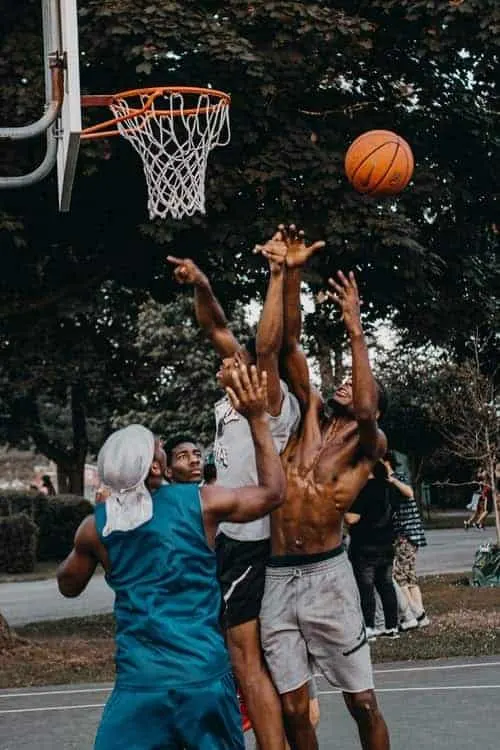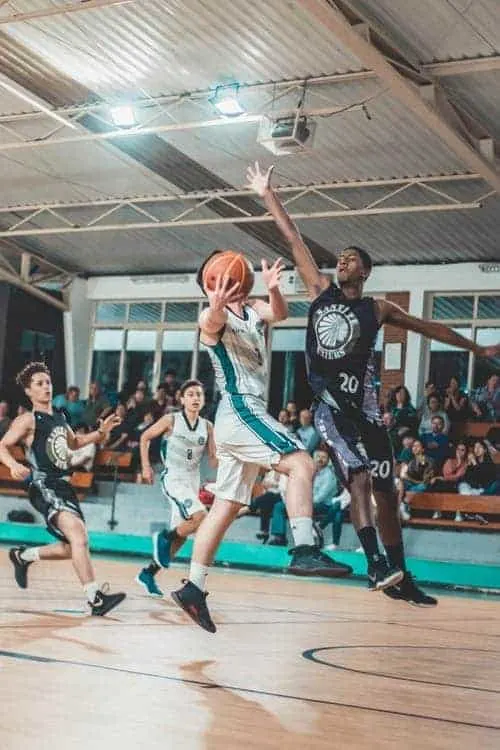Many of us mistake how the fouling system works in basketball, it can actually get confusing at times with what constitutes as a personal foul or team foul.
What’s the difference between a personal foul versus a team foul in basketball? The difference between the two types of fouls is the way they are counted during a game. A personal foul is any penalty that is against the rules of play. This foul will be added to the player’s total fouls and the team’s fouls. A team foul is the number of fouls of every player added together, the total of each player is the number of team fouls.
Do all types of fouls count as team fouls? Do flagrant and technical fouls count as personal fouls? We will dive into the type of fouls while seeing what constitutes a foul and when a team reaches the bonus to shoot free throws.
If you are interested in checking out the best basketball equipment and accessories then you can find them by Clicking Here! The link will take you to Amazon.com

Personal Fouls vs Team Fouls Examples
Types of Personal Fouls
There are 3 types of fouls in basketball, and they are personal fouls, flagrant fouls, and a technical fouls. A delay of game is also considered a personal foul and is considered interfering with play. These are all types of violations, all of which are added to team fouls, more on that later.
A personal foul is an infraction against the rules of play, which also just means that there was unnecessary contact with the player with the ball. These include push, hit, block, hold, illegal screen, and basically anything that is against the rules of basketball. An Offensive foul counts as a personal foul also.
In the NBA players are allowed 5 fouls if they reach 6 fouls they are considered fouled out. They must leave the game and sit on the bench as they are unable to return to the game. At the High School and College levels, players are allowed 5 fouls before being fouled.
A flagrant foul is a type of foul that is considered excessive contact on a player with the ball, intentional or unintentional. A flagrant 1 is called unnecessary contact while a fragrant 2 is called unnecessary excessive contact which results in an ejection of the player. They must exit the game and leave the court, they are not allowed to sit on the bench.
A classic example of a flagrant foul is the player with the ball goes to do a layup while the defender tries to block the player and misses while hitting the player doing the layup in the head. This would be a flagrant 1. If the player swipes as hard as he could to block the player but it looks like he was trying to take off his head this would be considered as flagrant 2 and ejection would result.

Team Fouls
So now that we know what personal fouls are and how many a player can receive during a game we need to calculate team fouls and its really very simple. An example will help us, lets imagine we are about to play a basketball game.
It is the beginning of the game and the ball has been tipped off. Our opponents win the tip and have the ball, we are playing defence. I foul a player while trying to steal the ball as he is trying to dribble by me.
The referee blows the whistle, that is my first foul. One personal foul for myself and one team foul. For every foul that a player receives it is added to the team fouls. The team inbounds the ball and now you (the reader) fouls a player who was trying to do a layup.
You now have one personal foul and I have one personal foul we are on the same team. The total team fouls is now 2 team fouls. It is very simple, at the end of the quarter I might have 2 fouls, while you may have 3 fouls and nobody else has any on our team. The total team fouls is 5. Simple I know.
The only time personal fouls do not count towards a team foul is offensive fouls.
When do Team Fouls Reset?
Personal fouls do not reset, they stay with the player for the entire game across all levels of basketball. Team fouls reset depending on which level of basketball you are playing and the league. NBA, NCAA and FIBA international basketball all have different rules and a different foul system.
NBA – In the NBA team fouls are reset after each quarter.
NCAA College Basketball – College basketball and high school basketball play by the same rules and both levels of play reset at halftime.
FIBA – Same as the NBA team fouls are reset after each quarter.
Again all personal fouls stay with the players and do not reset.

What is a Bonus in Basketball?
The bonus is when a team reaches a certain amount of team fouls. Their opponents get to shoot free throws as a result of too many fouls. It does not matter if a player was in shooting motion when the contact was made. As long as their opponents are in bonus they will go to the free-throw line and shoot free-throws.
Different across all leagues
NBA – In each quarter a team will enter a bonus when their opponents have committed 5 fouls in that quarter. If a team has not reached the penalty of 5 fouls here’s where it gets tricky.
In the final 2 minutes of the quarter if a team has not committed any fouls meaning they have zero team fouls they would only need to commit 2 fouls and the opposing team would be in bonus and go to the free-throw line. Every bonus foul results in two free throws for the team make or miss.
You could say team fouls technically reset at 2 minutes. If you’re asking why do they do it this way? It is because at the end of a game if a team needs to foul in order to get the ball back with less than a minute on the clock. They would be wasting a lot of time trying to foul the other team to get them in bonus in order to stop the clock.
You should be awarded for having good team defense not have to suffer from it because now you have to foul 4 times at the end of the game just to try and get the ball back.
College Basketball/ High School – Bonus works differently, we know that at every half team fouls reset. When a team reaches 7, 8, and 9 fouls they are in what is called the single bonus. This means they will shoot what is called a one and one.
A one and one is basically if you make the shot you shot a second. If you miss your first shot you do not get to shoot again and the ball is live once it hits the rim.
A double bonus is when a team reaches 10 fouls. They automatically shoot two free-throw no matter if they make or miss.
FIBA – Bonus in FIBA works when a team has committed 5 team fouls. The bonus results in 2 free throws given to the team that drew the foul.
In all levels of play and leagues, if an offensive foul happens and a team is in bonus, this does not result in any additional free throws. It is a simple turnover and a switch in possession.
Fun Facts:
Most team fouls in a game?
On April 9, 1990, the Utah Jazz faced off against the Phoneix Suns and managed to hear the whistle blown against them 52 times for the most amount of team fouls in NBA history for one game.
Quickest player to foul out of a game?
On December 29, 1997, Bubba Wells holds the record for fouling out of a game in the quickest time possible of just 3 minutes of play. To his defense he was put in the game to foul a player similar to the hack-a-Shaq strategy that teams will use.
Most free throws shot attempts in a game by a player?
Dwight Howard attempted 39 free throws in a game twice. On March 12, 2013, and January 12, 2012.

